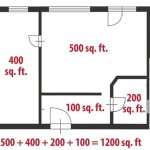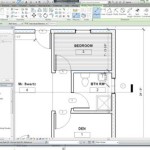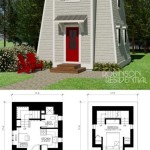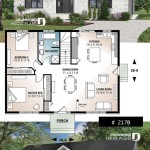Vintage House Plans: An Exploration Of Timeless Designs
Vintage house plans offer a unique glimpse into architectural styles and living preferences of bygone eras. These plans, often meticulously preserved, provide detailed blueprints for homes built during different periods, ranging from the Victorian era to the mid-century modern movement. Studying these plans allows one to understand not only construction techniques of the past but also the societal values and aesthetic sensibilities that shaped residential design. Examining the floor plans, materials specifications, and decorative details provides valuable insights for those interested in architectural history, home renovation, or even new construction inspired by classic designs. Just like antique jewelry holds stories from the past, each vintage house plan encapsulates a tangible piece of historical narrative.
The appeal of vintage house plans is multifaceted. For some, it's a romantic connection to the past, a desire to recreate a home that evokes a sense of nostalgia and timeless elegance. For others, it's an appreciation for the craftsmanship and attention to detail often found in older homes. Vintage plans also offer practical advantages. They can serve as inspiration for contemporary designs, helping architects and homeowners incorporate classic elements into modern living spaces. Furthermore, renovating an existing vintage home using original plans can ensure historical accuracy and preserve the architectural integrity of the building. The durability and elegance mirrors the value found in vintage jewelry, where craftsmanship and design stand the test of time.
Moreover, understanding vintage house plans can be crucial for anyone involved in historical preservation. These plans provide essential documentation for restoring or rehabilitating historic properties. They offer a roadmap for understanding the original features of a building, including its layout, materials, and decorative elements. This knowledge is vital for making informed decisions about restoration work, ensuring that any changes are sensitive to the building's historical character. Just as jewelers carefully restore antique jewelry, preserving its beauty and value, architects and builders use vintage house plans to revive and maintain the integrity of historic homes.
Understanding Different Architectural Styles
Vintage house plans encompass a diverse range of architectural styles, each with its unique characteristics and influences. Victorian architecture, prevalent from the mid-19th century to the early 20th century, is characterized by elaborate ornamentation, asymmetrical facades, and steeply pitched roofs. Common features include bay windows, turrets, and decorative trim. The floor plans of Victorian homes often reflect a formal approach to living, with separate rooms for different activities, such as parlors, dining rooms, and libraries. The materials used in Victorian construction typically included wood, brick, and stone, with a focus on intricate detailing.
In contrast, Craftsman architecture, which emerged in the early 20th century, emphasized simplicity, functionality, and the use of natural materials. Craftsman homes typically feature low-pitched roofs with wide eaves, exposed rafters, and large porches. The floor plans are often more open and informal than those of Victorian homes, reflecting a shift towards a more relaxed lifestyle. Common materials include wood, stone, and stucco, with an emphasis on handcrafted details. Craftsman homes often incorporate built-in cabinetry, fireplaces, and other features that enhance the functionality and comfort of the living space. This focus on practicality and beauty, much like choosing a piece of jewelry for its timeless design, remains appealing today.
Mid-century modern architecture, popular from the 1940s to the 1960s, is characterized by clean lines, open floor plans, and large windows that bring the outdoors in. Mid-century modern homes often feature flat or low-pitched roofs, simple facades, and an emphasis on horizontal lines. The floor plans are typically open and flexible, with living spaces that flow seamlessly together. Common materials include wood, glass, and concrete, with an emphasis on simplicity and functionality. Mid-century modern homes often incorporate features such as atriums, patios, and built-in furniture, reflecting a desire for a modern and comfortable living environment. The sleek, minimalist aesthetic of mid-century modern homes parallels the clean lines and geometric shapes often found in mid-century modern jewelry.
Key Elements in Deciphering Vintage House Plans
Deciphering vintage house plans requires a basic understanding of architectural drafting conventions and terminology. Plans typically include several different types of drawings, such as floor plans, elevation drawings, section drawings, and site plans. Floor plans show the layout of the rooms in the house, including the location of walls, doors, windows, and fixtures. Elevation drawings show the exterior views of the house from different sides, providing information about the building's facade and roofline. Section drawings show a vertical cut through the house, revealing the internal structure and construction details. Site plans show the location of the house on the property, including the surrounding landscape and any other buildings or features.
In addition to these drawings, vintage house plans often include detailed specifications for materials and construction methods. These specifications may list the type of wood to be used for framing, the thickness of the walls, and the type of roofing material. They may also include information about the plumbing, electrical, and heating systems. Understanding these specifications is crucial for accurately estimating the cost of restoring or renovating a vintage home. Furthermore, they provide valuable insights into the construction practices of the time. Just as evaluating the quality of materials is essential in jewelry making, understanding the materials specified in vintage house plans is crucial for preserving the integrity of the building.
When examining vintage house plans, it’s important to pay attention to the scale and dimensions. Plans are typically drawn to a specific scale, such as 1/4 inch equals 1 foot, which means that every 1/4 inch on the plan represents 1 foot in the real world. Understanding the scale allows one to accurately measure the dimensions of the rooms and other features of the house. Dimensions are typically indicated on the plan in feet and inches, and it’s important to carefully review these dimensions to ensure that the plan is understood correctly. Paying close attention to details like window placement, door swings, and ceiling heights can also provide valuable insights into the design and functionality of the house. Careful attention to detail, reminiscent of scrutinizing the facets of a gem, is essential for accurately interpreting vintage house plans.
Preserving and Adapting Vintage Designs for Modern Living
Preserving vintage house plans is essential for protecting architectural heritage and ensuring that future generations can learn from the designs of the past. Many historical societies and archives maintain collections of vintage house plans, making them available to researchers, homeowners, and architects. Digitizing these plans can help to preserve them for the long term and make them more accessible to a wider audience. Additionally, creating detailed documentation of vintage homes, including photographs, drawings, and written descriptions, can help to preserve their history and architectural significance. The careful preservation of these plans mirrors the meticulous care taken to preserve and restore valuable artifacts, like antique jewelry.
Adapting vintage house plans for modern living requires a careful balance between preserving the original design and incorporating contemporary amenities. Modern homeowners often desire features such as larger kitchens, updated bathrooms, and energy-efficient systems. While it's important to respect the historical integrity of the house, it's also necessary to make modifications that enhance its comfort and functionality. This might involve reconfiguring the floor plan to create a more open living space, adding modern appliances, or upgrading the insulation and windows to improve energy efficiency. The key is to make these changes in a way that is sympathetic to the original design, using materials and details that complement the existing architecture.
When adapting vintage house plans, it’s important to consider the impact on the building's historical character. Changes that alter the exterior appearance of the house should be carefully considered, as they can detract from its architectural significance. It's also important to preserve original features such as windows, doors, and trim whenever possible. When these features need to be replaced, it's best to use materials and designs that are historically accurate. Working with an architect or contractor who has experience in historic preservation can help to ensure that any modifications are done in a way that respects the building's history and architectural integrity. The meticulous approach required for adapting vintage house plans mirrors the precision and care taken when resetting a precious stone in an antique jewelry setting.

Top 10 Modern House Designs The Gwyndolyn

Vintage Glam Decor Exploring The Style And

Exploring The Timeless Beauty Of Renaissance Jewelry

Vintage Exploring Timeless Charm Empire Revival

Timeless Interior Design 15 Looks We Ll Never Retire Havenly Blog

Keeping A Jeweler S Design Vision In The Family New York Times

Timeless Interior Design 15 Looks We Ll Never Retire Havenly Blog

Joint Venture Jewelry Raleigh Nc And Cary North Ina S Home For Vintage Consignment Fine Diamonds Engagement Rings

Exploring The Timeless Charms Of Victorian Jewelry

Custom Designed Jewelry By Julio Benez In Los Angeles Artisan La
Related Posts








